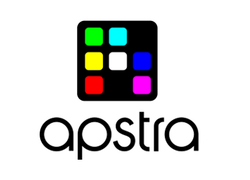Apstra aims to simplify and speed device OS upgrades in multi-vendor network environment

Apstra Inc., a specialist in Intent-Based Networking for the data centre announces a key capability of their flagship product, Apstra AOS, targeted at Network Operating System (NOS) Upgrades. Apstra automates and validates Network Operating System upgrades across an entire IP fabric with a few simple clicks in the UI – regardless of vendor. This feature set ensures compliance and reduction in maintenance time from weeks or months to hours or days.
According to Gartner, in an April 2019 Strategic Roadmap for Networking Report, “Approximately 70% of data centre networking tasks are performed manually, which increases time, cost and likelihood of errors, and reduces flexibility.”
The report goes on to state, “By 2023, to enhance agility and reduce downtime, more than 60% of data centre networking operational activities will be automated, up from 30% today. Network leaders should focus on solutions that simplify the deployment and operation of the network, using capabilities such as zero-touch configuration, orchestration with APIs, business-policy-based configurations, IBN solutions, automation and virtualisation.”
When upgrading the NOS for any network devices including routers and switches, this almost always involves interruptions to the network, which usually means network engineers are always doing this work in the middle of the night. For many network engineers, the process is still a manual process. With the increased complexity of NOS software, upgrades can still be the most difficult activity a network engineer has to endure.
There are many reasons for a network engineer to upgrade a NOS on the network. The first reason is to load a new NOS version that fixes bugs, security vulnerabilities or other issues in the NOS. The second is to enable new features. Too frequently, loading a new NOS for features also introduces bugs, necessitating another upgrade. Or worse leads to downtime and outages or network instability affecting business critical services.
Apstra AOS provides pain relief for Network Operating System headaches. Apstra pre-qualifies selected vendor NOS versions for supported network device vendors such as Cisco, Cumulus and Arista against Apstra’s Reference Design for data centre networks.
Apstra uses a sophisticated, extensive automated testing platform that verifies the quality of the Apstra AOS software at scale which models the different services and payloads. Apstra runs fifteen million unit tests per day, covering 600+ topologies, 100+ physical devices with a variety of hardware vendors, models, and chipsets (Arista, Cisco, Juniper, Dell, Edgecore, Mellanox, Quanta, Celestica, etc) as well as virtual appliances (vEOS, NXOSv, Cumulus, OPX, Ubuntu/CentOS).
Any device in the data centre can be connected to any other device (physical or virtual) through the use of a reservation system and an automated programmable L1/2 patch panel, which allows Apstra to replicate and test any customer topology in its own infrastructure prior to deployment.
Prior to using AOS, a major financial services company had a single engineer working on OS upgrades, taking upwards of eight months to upgrade 174 switches. The same tasks could have been completed with AOS Maintenance Mode and Device OS Upgrade in approximately 87 hours.
With Apstra AOS certifying best-practices reference designs that work with recommended vendor Network Operating Systems versions, the finger-pointing can be avoided. Network Engineers can avoid headaches, their lives can be improved and the efficiency of their businesses can be improved, allowing them to add capabilities for the users they support.
Apstra founder and CEO Mansour Karam will be presenting at Gartner Infrastructure Operations and Cloud Strategies on How to Eliminate Data Centre Network Operational Legacy Forever. Come learn how this can be done (requires consuming reliable network services through a software layer). Come visit Apstra at Gartner IOCS in Booth # 367 from Monday, December 9th to 11th.
Comment on this article below or via Twitter @IoTGN
